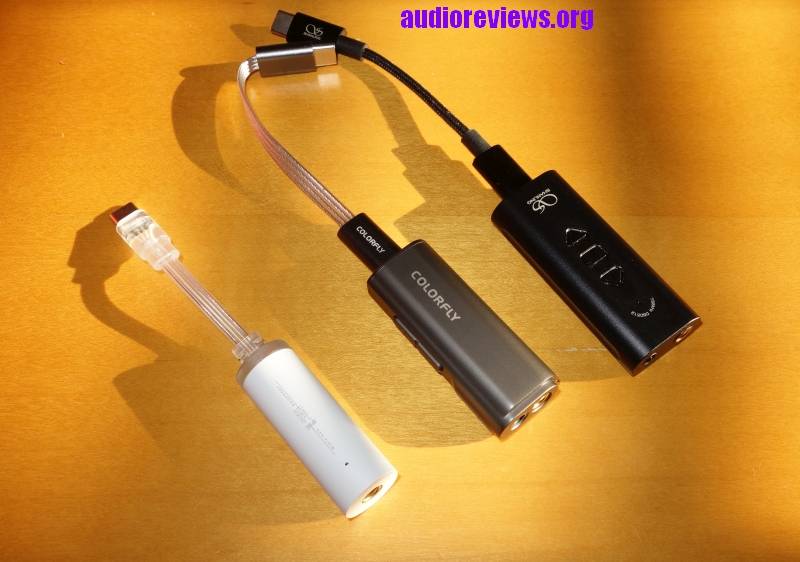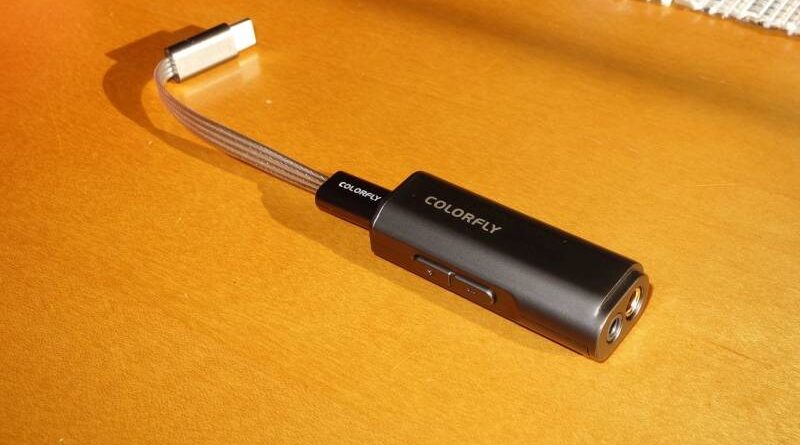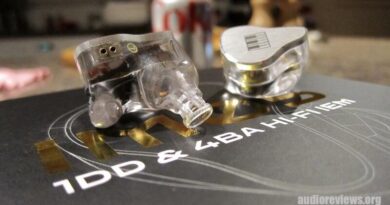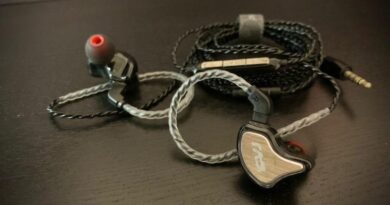Colorfly CDA-M1P DAC Review (1) – Whoa This is Heavy Doc
INTRO
The Colorfly CDA-M1P is a force to be reckoned with in terms of shear weight for a portable USB DAC dongle. Sometimes making things heavy to appease those that equate heavy with quality does not improve the experience. Something this heavy jammed into a pocket with a phone gives me a moment of worry in terms of damage to screens and such.
The predecessor to the Colorfly CDA-M1, the CDA-M1P utilizes the AKM DAC chips over ESS, different opamps and adds some more power. The bass presents strength, the treble is gentle, and the overall package is a mixed bag in features.
FEATURES
The detachable ribbon cable is the same as the fixed cable on the Moondrop Dawn 4.4. I particularly do not enjoy the rigidity of the cable, but again maybe the designers had concerns of a more flexible cable not holding up to the forces a heavier dongle may weigh onto the cable connections.
One final concern involves the 130ma current draw regardless of gain setting. While not the highest I have seen from other dongles, it will drain your battery faster than other dongles such as the Truthears Shio that clock in around 50ma. It is quite interesting that the high/low gain settings do not impact current draw. This seems to be the case on all USB dongle DACs I have tested so far. It does however generate significant heat in the high gain setting mode.
The heavy zinc alloy electroplated case is smooth, extremely solid, and the fit and finish is most excellent. The beef of the case helps to dissipate the extra heat generated from the higher power consumption. The detachable USB-C cable fits tight and snug. The user can change out the cable in case of failure, general preference, or for something longer if using at home.
Airing out my grievances of the Colorfly CDA-M1P we can focus more on what it aims to achieve in terms of sound. Packed inside is the AKM4493SEQ DAC chip allowing 6 filter changes. It also includes dual opamp gain stages powered by the XR2001 opamp. I am not familiar with this opamp and trying to find a datasheet was difficult. The opamp allows higher output power than relying solely on the DAC chip itself.
We get a powerful 125mW single ended and 240mW 4.4mm balanced output at 32 ohms. There are more powerful options for single ended, but balanced output is near the top of other DACs in the same class. It’s not going to be equivalent to a dedicated desktop dac/amp, but it will provide increased power and control for moderately high impedance headphones doing justice for loads 150 ohms or less 300 ohm is the ultimate ceiling for me.
Low and High Gain modes are selected by pressing both volume buttons at the same time, with the red light indicating low and yellow high gain. Colorfly recommends low gain for anything under 120 ohms, and high impedance/gain mode for greater than 120 ohms.
The Colorfly CDA-M1P is a direct competitor and shares almost all the same features as the Shanling UA3 previously reviewed. As DAC’s are trending downward in price, the Colorfly CDA-MP1 shaves off $40 coming in at $79. The Shanling UA3 can be used with their Eddict Player app which allows control of assigning buttons and changing filter settings. The Colorfly CDA-MP1 is only controlled via the buttons.
Due to only hardware control, I could not tell what filter mode the Colorfly CDA-M1P was set in easily without the help of the manual. Only mode 6 flashes the white light twice when pressing both volume buttons long enough. Once you know it is in mode 6 you can cycle back to the other modes by keeping track of how many times you switch it. This has an impact since I wanted to match the filter of the Shanling to that of the Colorfly.
DSD fans with have several options offering 512 native decoding or 256 DoP decoding with sampling frequencies up to 768khz. For simpler connections there is a UAC1.0 mode to connect with legacy connection devices such as the Nintendo Switch.
SOUND
Tested with LG G8 Sennheiser IE200 Single-ended, and Sivga Nightingale, BGVP DM9 Balanced
I notice it sounds fuller and balanced compared to the thinner in the lower mids and brighter Shanling UA3. The UA3 sounds more V shaped with slightly more sculpted bass with longer decay and impact. They will both measure flat, so this likely comes from noise shaping and distortion handling. We are talking about tiny differences here though.
Cymbals sound smoothed and cleaner on the Colorfly CDA- M1P overall. There is some increased naturalness when paired with the Sivga Nightingale in balanced mode in comparison to the UA3. I don’t know if the UA3 struggles to control the planar driver but it also sounds compressed and tinny.
Now against the Moondrop Dawn 4.4, the Colorfly sounds cleaner and bass has more low end grunt. The Moondrop Dawn is less exciting and focuses on the lower treble enhancement and midbass impact. I would clearly pick the Colorfly CDA-M1P as it sounds cleaner and more resolving.

FINAL REMARKS
Taking dings in the power consumption, weight and user settings categories, the Colorfly CDA-M1P is a strong contender for clean transparent sound. If you are not one to tinker too much and don’t mind a pocket weight heater, the Colorfly CDA-M1P performs well.
Disclaimer: I am grateful ShenzhenAudio.com sent this free of charge no strings attached. That is how we like our relationships.
PACKAGE CONTENTS
DAC
Cable USB-C to USB-C
Instruction manual
SPECIFICATIONS Colorfly CDA-M1P
Dimensions: 562214.5mm
Weight: 46g
USB Interface: Type C
Signal-to-Noise Ratio: 125dB
Frequency Response: 20Hz~20kHz
Dynamic Range: 122dB
Decoding Formats:
PCM 32Bit / 768kHz
DSD 512 / Native
DSD 256 / Dop
THD+N:
-104dB@RL=600Ω,0dB/Balanced
-100dB@RL=32Ω,100mW/Balanced
-104dB@RL=600Ω,0dB/Unbalanced
-100dB@RL=32Ω,100mW/Unbalanced
Headphone Jack:
3.5mm Unbalanced / 4.4mm Balanced
Output Level:
2Vrms @RL=600Ω Unbalanced Output
4Vrms @RL=600Ω Balanced Output
Maximum Output Power:
125mW@RL=32Ω Unbalanced Output
240mW@RL=32Ω Balanced Output
Firmware Upgrade: Support for future upgrades
DISCLAIMER
Get it from ShenzhenAudio.com Store
Our generic standard disclaimer.






